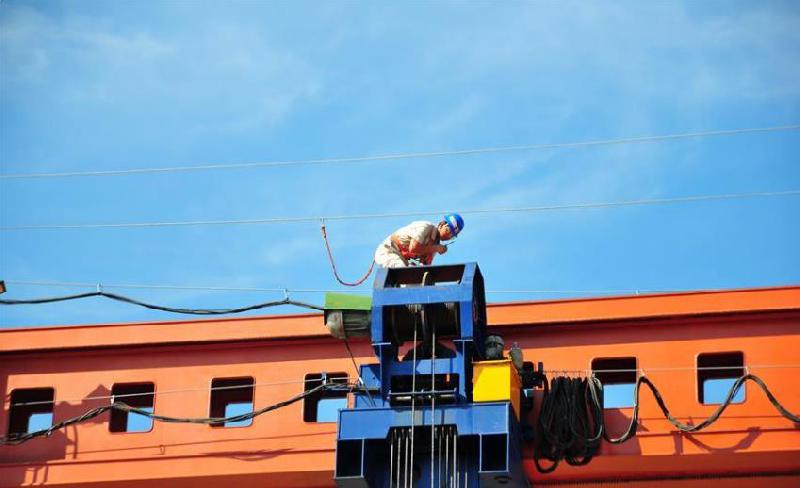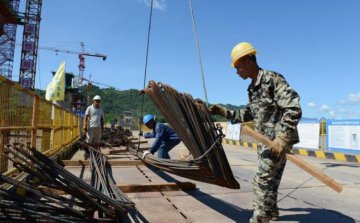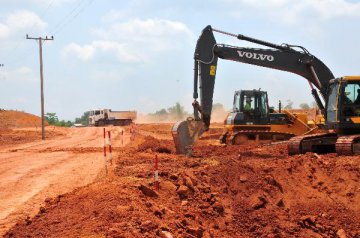
A technician works at the construction site of the first China-Laos Railway T-shaped concrete beam in Lao capital Vientiane, Dec. 2, 2018. The successful erection of the first simply supported T-shaped concrete beam marks that the construction of China-Laos railway has been transferred from substructure to superstructure and it will become the milestone in the history of the construction of China-Laos railway, according to China Railway No.2 Engineering Group (CREC-2) . The operating speed of trains on the route is designed to be 160 km per hour. The railway is expected to be fully operational in December 2021.
On the occasion of the 43rd anniversary of National Day of Lao People's Democratic Republic, the first China-Laos Railway T-shaped concrete beam was successfully erected at the site of China Railway No.2 Engineering Group (CREC-2) in Lao capital Vientiane on Sunday.
The successful erection of the first simply supported T-shaped concrete beam marks that the construction of China-Laos railway has been transferred from substructure to superstructure and it will become the milestone in the history of the construction of China-Laos railway, according to the CREC-2.
The construction China-Laos railway starts from Boten, the northern Lao town bordering China, connects with the Chinese Yuxi-Mohan Railway in Yunnan province to the north, and reaches to Vientiane in the south.
The China-Laos railway is being promoted by the leaders of the two countries as a project of interconnectivity. Since the commencement of construction in December 2016, the building of tunnels, bridges, roadbeds and other sections has progressed smoothly along the route.
The operating speed of trains on the route is designed to be 160 km per hour. The railway is expected to be fully operational in December 2021.


















Latest comments